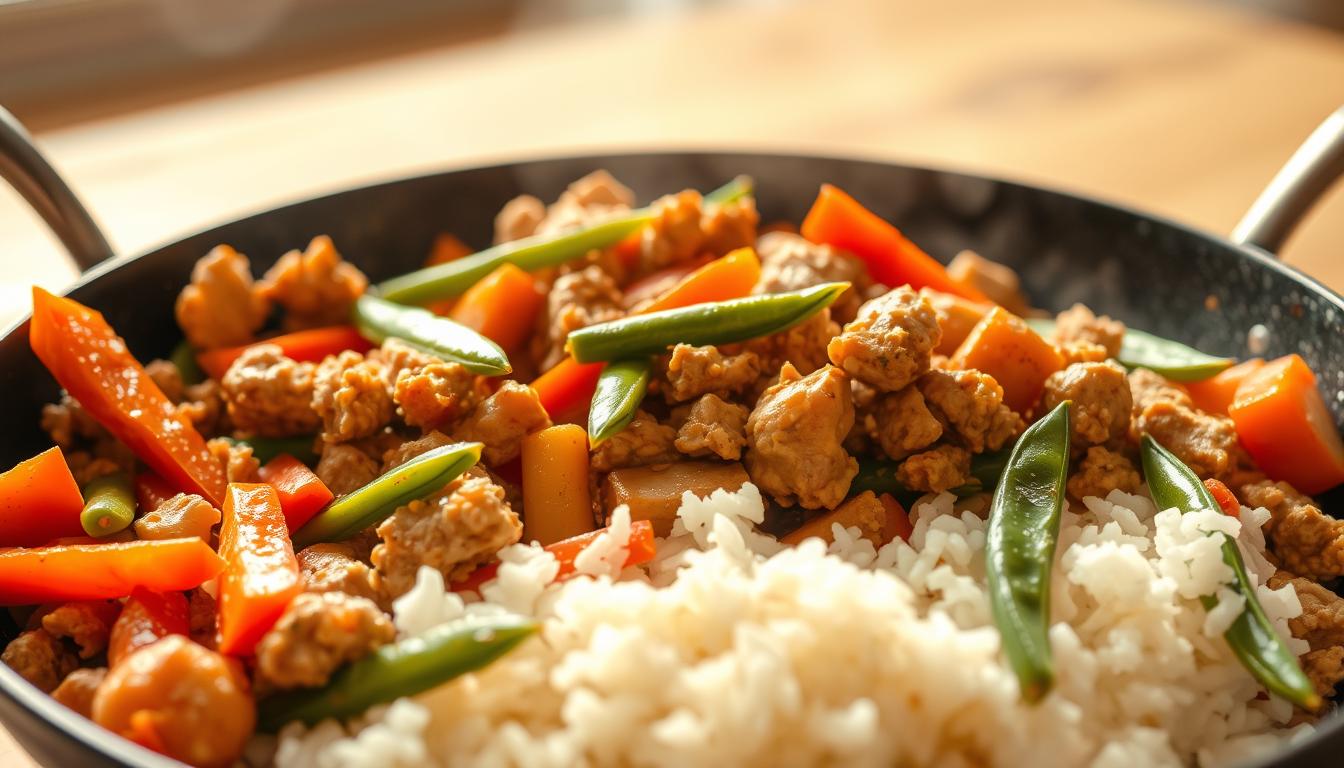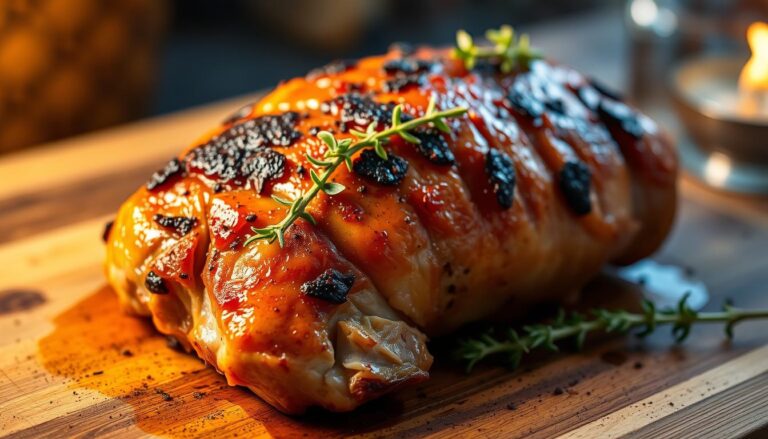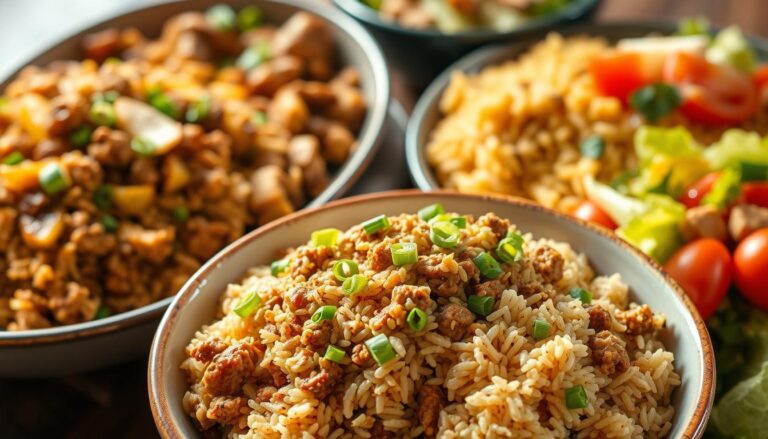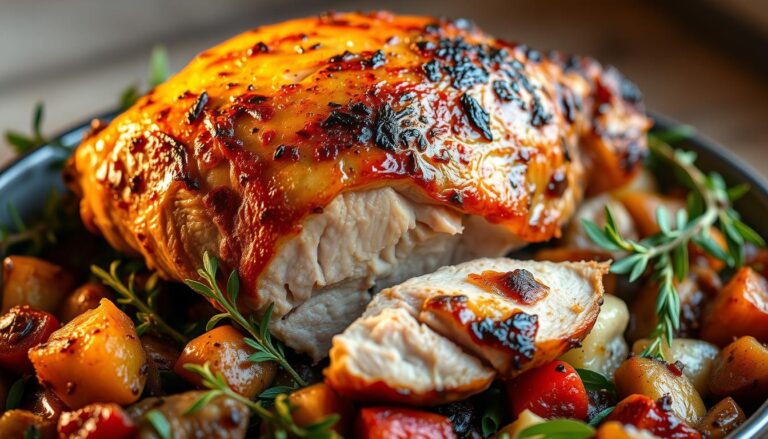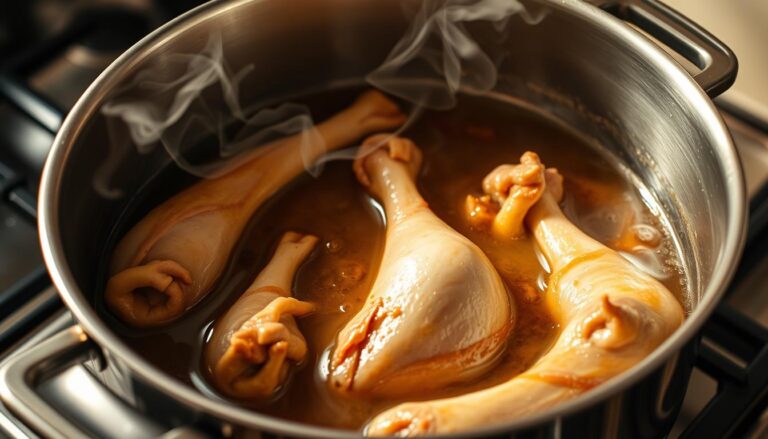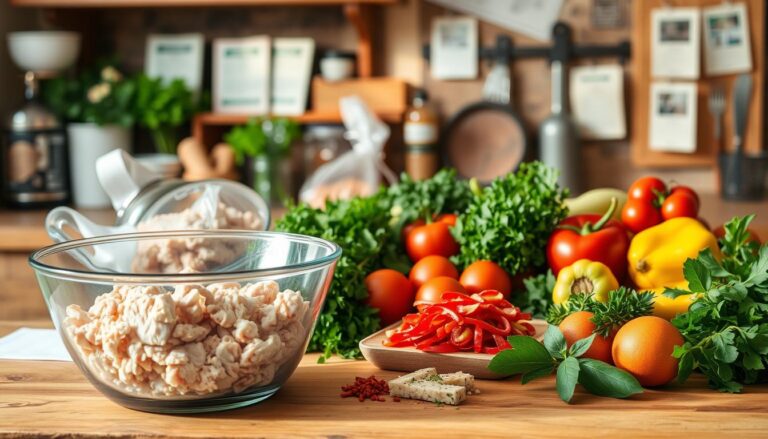Make Your Ground Turkey Stir Fry with These Simple Ingredients
You know that weeknight rush when hunger and work clash? This recipe arrives like a calm solution. In about 30 minutes you can make a bright, savory dish that feels like home but tastes like a restaurant.
Start with lean protein and a few fridge staples. Brown the meat so it stays juicy, then add quick-cooking vegetables to keep their color and crunch. A simple homemade sauce and a cornstarch slurry give a glossy finish in minutes.
You’ll love how everyday ingredients turn into a craveable dinner. Serve over rice or noodles, garnish with sliced green onion, and refrigerate leftovers for up to four days. This is a flexible, high-protein meal that saves you time without sacrificing flavor.
Table of Contents
Why You’ll Love This Quick ground turkey stir fry
Fast, flavorful, and flexible — this recipe adapts to what you have in the fridge and finishes in about 30 minutes.
This is a nourishing, high-protein meal that pairs lean ground turkey with colorful vegetables for a satisfying plate. The method moves quickly, so you spend more time eating and less time cooking.
The homemade sauce is simple to whisk together and gives each bite a glossy, savory finish. You can make a teriyaki-style version with a touch of orange zest for brightness.
It’s perfect for meal prep: cook once, portion into containers, and reheat for easy lunches or dinners all week. The recipe also freezes well, so you can make extra and save time later.
- About 30 minutes from start to finish, ideal for busy weeknight dinner needs.
- Customizable vegetables let you use what’s in your crisper and cut waste.
- Control the sauce and heat level so everyone at the table is happy.
Simple Ingredients You Need for a Flavor-Packed Stir Fry
A short shopping list of smart ingredients is all you need to build big flavor fast.
Start with 1 lb ground turkey or swap with ground chicken or ground beef if you prefer. This keeps the dish lean while delivering satisfying protein and quick cooking time.
Quick-cooking vegetables
Choose bell pepper, broccoli, zucchini, shredded carrot, and green onions. These veggies cook fast and stay crisp.
Aromatics and pantry staples
Grate fresh ginger and garlic for the brightest flavor. Use low-sodium soy sauce, a splash of rice vinegar, toasted sesame oil, and a touch of brown sugar to balance salty and sweet.
- Thin-slice or shred firm veg so everything cooks evenly.
- Frozen baby corn, water chestnuts, or bean sprouts add texture with minimal prep.
- For a teriyaki-style twist, add honey and a pinch of orange zest.
| Protein | Best Use | Note |
|---|---|---|
| Ground turkey | Lean, cooks fast | 1 lb yields 4 servings |
| Ground chicken | Similar texture | Slightly milder flavor |
| Ground beef | Richer taste | Use lean cut to reduce oil |
Homemade Stir Fry Sauce That Beats Takeout
Make a sauce that wakes up every bite with bright, balanced flavor. Whisk reduced-sodium soy sauce with low-sodium chicken broth or plain water, then stir in a splash of oyster or teriyaki sauce for deep umami. Sweeten with brown sugar and a touch of honey, and add sriracha or chili garlic sauce to taste for controlled heat.
Brighten the mix with rice vinegar or mirin and finish with toasted sesame oil for a warm, nutty note. If you want a citrus lift, grate a little orange zest into the sauce for a fresh pop that pairs especially well with teriyaki-style versions.
Thickening and tweaks
Whisk a cornstarch slurry separately and add it at the end so the sauce thickens fast and stays silky. Double the sauce if you like your noodles or vegetables generously coated.
- Thin the sauce with a splash of water, soy, or orange juice if it gets too thick.
- Use reduced-sodium components to avoid oversalting while keeping bold flavor.
- Store extra sauce in the fridge for quick weeknight use.
“Aim for balance—salty, sweet, spicy, and tangy—so every bite tastes complex and satisfying.”
How to Make It Step by Step in About 30 Minutes
With a few focused moves you can finish this recipe in roughly thirty minutes and still keep flavors bright.
Prep fast
Start your rice first so it’s ready when the pan is done. Whisk the sauce: low-sodium soy, water or broth, brown sugar, rice vinegar, sesame oil, grated ginger, and sriracha. Mix cornstarch with cold water to make a smooth slurry.
Brown the meat
Heat oil in a large skillet over medium-high. Spread the meat in an even layer so it caramelizes. Season with garlic powder, cook until no longer pink, then transfer to a plate.
Cook the vegetables
Add a little more oil, then stir the zucchini, shredded carrot, bell, and broccoli. Cook 3–5 minutes until tender-crisp. Add grated ginger and a touch of garlic near the end to avoid burning.
Finish and serve
Return the meat to the skillet and pour in the sauce. Make a small well, whisk in the slurry, and toss as the sauce thickens—this takes about a minute. Turn off the heat and finish with sliced green onions.
“Keep the heat steady and the steps moving; you’ll finish on time with a well-coated, vibrant dish.”
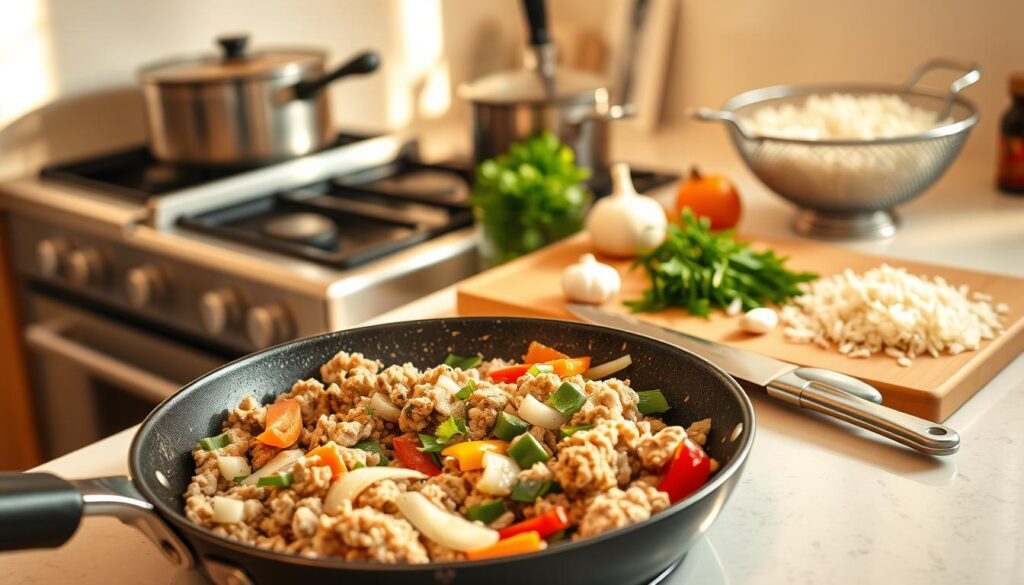
| Step | Action | Time |
|---|---|---|
| 1 | Start rice and whisk sauce + slurry | 5 minutes |
| 2 | Brown meat in a skillet with oil and garlic | 6–8 minutes |
| 3 | Stir vegetables until tender-crisp, then combine and thicken | 6–8 minutes |
Pro Tips for Restaurant-Style Results at Home
Use heat and pan space to build flavor and keep textures bright. A high flame sears meat and locks in juices while leaving vegetables crisp.
Choose the right pan and manage moisture
Use a wide, flat-bottomed wok or a large skillet so ingredients have room to brown instead of steaming. If moisture pools, blot it with a paper towel and return to high heat.
Keep vegetables crisp-tender
Cook veggies in batches and add them back near the end. They will finish in the sauce and stay bright.
Speed tricks for busy nights
- Add oil in stages so nothing sticks and fat distributes evenly.
- Use pre-cut vegetable blends or powdered aromatics to save minutes.
- Taste the sauce and tweak with a splash of vinegar, sweetener, or extra heat.
| Tool | Benefit | When to Use |
|---|---|---|
| Flat wok | Best for high-heat searing | When you need fast color |
| Large skillet | Even contact, easy to stir | Everyday weeknight cooking |
| Pre-cut veg mix | Time saver | Meal prep and busy nights |
“Preheat well and keep ingredients moving; sear first, sauce later for the best texture.”
Easy Variations and Ingredient Swaps
A few smart swaps turn this recipe into a dozen quick weeknight meals.
Change proteins to suit taste or what’s in your fridge. Swap the main protein for ground chicken, lean beef, pork, or turkey sausage for a bolder profile. If you use beef, drain excess grease before adding the sauce to keep the pan from steaming the vegetables.
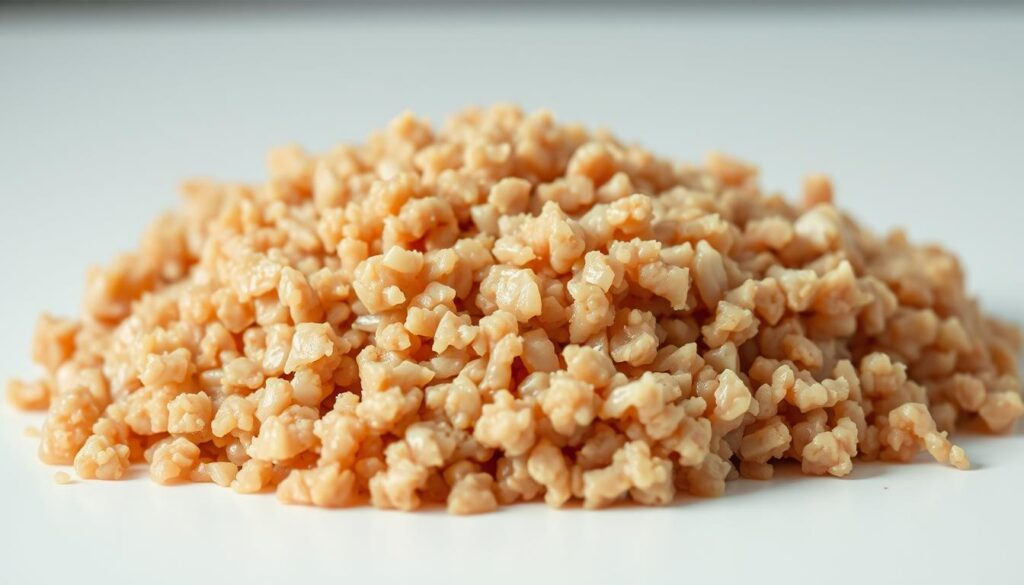
Mix up the vegetables
Rotate your veggies to keep the dish interesting. Try snow peas, cabbage, baby corn, mushrooms, spinach, or bok choy.
Cut everything to a similar size so the vegetables cook evenly and finish at the same time.
Customize the flavor
Adjust the sauce to match your mood. Make it sweeter with a touch more brown sugar or honey. Add tang with rice vinegar or mirin. For heat, stir in chili garlic sauce or sriracha.
“Double the sauce if you want every bite glossy and extra saucy—add it gradually to taste.”
- Try turkey stir or ground turkey stir for a lighter option with familiar seasoning.
- Use turkey sausage for built-in seasoning and an easy shortcut.
- Toss in noodles in the pan so they soak up the sauce and finish with the vegetables.
Serving Ideas: Rice, Noodles, and Low-Carb Options
A simple change of base turns the same pan into a cozy bowl, noodle dish, or low‑carb plate.
Classic bases: Spoon the hot mixture over jasmine or brown rice for a comforting, familiar bowl. For a slurpable option, toss with rice noodles so they soak up the sauce and warmth.
Low‑carb swaps: Choose cauliflower rice or zoodles to keep the meal light without losing texture. Make crisp lettuce cups for a handheld dinner or layer the warm mix over mixed greens for a warm salad-style bowl.
- Top with sesame seeds and sliced green onions to add nutty crunch and fresh color.
- Drizzle extra sauce over the top if you want a glossier finish; thin with water, soy, or orange juice as needed.
- Add a dash of hot sauce for heat, or serve with steamed edamame or a light soup on the side.
| Serving Style | Best For | How to Finish |
|---|---|---|
| Jasmine or brown rice | Comforting family meal | Top with sesame and green onions |
| Rice noodles | Slurpable, noodle-forward dinner | Toss with extra sauce so noodles absorb flavor |
| Cauliflower rice / zoodles | Low‑carb option | Keep veggies crisp and add extra sauce sparingly |
| Lettuce cups / mixed greens | Crisp, lighter plate | Serve warm mix on leaves and finish with seeds |
“Choose the base that fits your appetite—rice for comfort, noodles for fun, or greens for a lighter meal.”
Nutrition and Health Notes for a Balanced Meal
Small tweaks—like using less oil and low-sodium soy—sharpen nutrition without losing taste.
Estimated per serving (no rice): ~250 calories, ~30g protein, ~9g fat, ~14g carbs, ~705mg sodium. Using low-sodium soy in the sauce helps lower that sodium number.
Lean ground turkey provides high protein with less saturated fat than many red meats. Pair the pan mix with whole grains for lasting energy, or choose cauliflower rice to cut carbs.
Vegetables add fiber and vitamins. Broccoli brings vitamin C and potassium, and carrots boost vitamin A. Ginger and garlic add flavor with almost no calories, and quick cooking time preserves nutrients in tender-crisp veggies.
- Manage fat: Use minimal oil and leaner protein to keep texture without extra calories.
- Watch sauce: Measure components and pick low-sodium versions to control salt and flavor.
- Repeatable approach: Save these nutrition notes with the recipes so you can repeat a balanced dinner again and again.
| Nutrient | Per Serving | Note |
|---|---|---|
| Calories | ~250 | Without rice |
| Protein | ~30 g | High for a quick meal |
| Sodium | ~705 mg | Reduce with low-sodium soy |
“Balance portions and make small swaps—flavor stays bold while nutrition improves.”
Storage, Leftovers, and Meal Prep
A little planning after cooking saves you time and keeps dinner tasty all week.
Cool and seal promptly. Store cooled stir in an airtight container for 3–5 days. Many cooks note 3–4 days is safest, while some versions allow up to 5 days.
Refrigerate and reheat the right way
Reheat gently on the stove over medium or in short microwave bursts to avoid overcooking. If the sauce tightens after chilling, loosen it with a splash of water or broth as you warm the mix.
Freeze for quick future meals
Freeze cooled portions in single-serving containers for up to 3 months. Thaw overnight in the fridge before reheating to keep texture firm and flavors balanced.
- Store cooled stir in an airtight container to maintain texture and flavor.
- Plan for leftovers so lunches take only minutes to reheat.
- Label each container with the date to rotate your stash.
- For meal prep, portion over rice in divided boxes for grab-and-go meals.
- Add a handful of fresh green onions on top after reheating to brighten flavors.
“Batch-cook once to save time—proper storage and gentle reheating keep the sauce glossy and the vegetables crisp.”
Conclusion
You now have a reliable, weeknight-ready recipe that finishes in about 30 minutes. With a hot skillet, a brief sear, and a balanced sauce you’ll get tender protein and crisp veggies every time.
Keep pantry staples like soy sauce, brown sugar, and sesame oil on hand so the sauce comes together fast. Serve the mix over rice or rice noodles, top with sliced green onion and sesame seeds, and enjoy.
Batch cook, portion into an airtight container, and refrigerate for easy lunches or freeze for longer storage. Save this recipe and your favorite swaps so dinner is simple, tasty, and repeatable.

